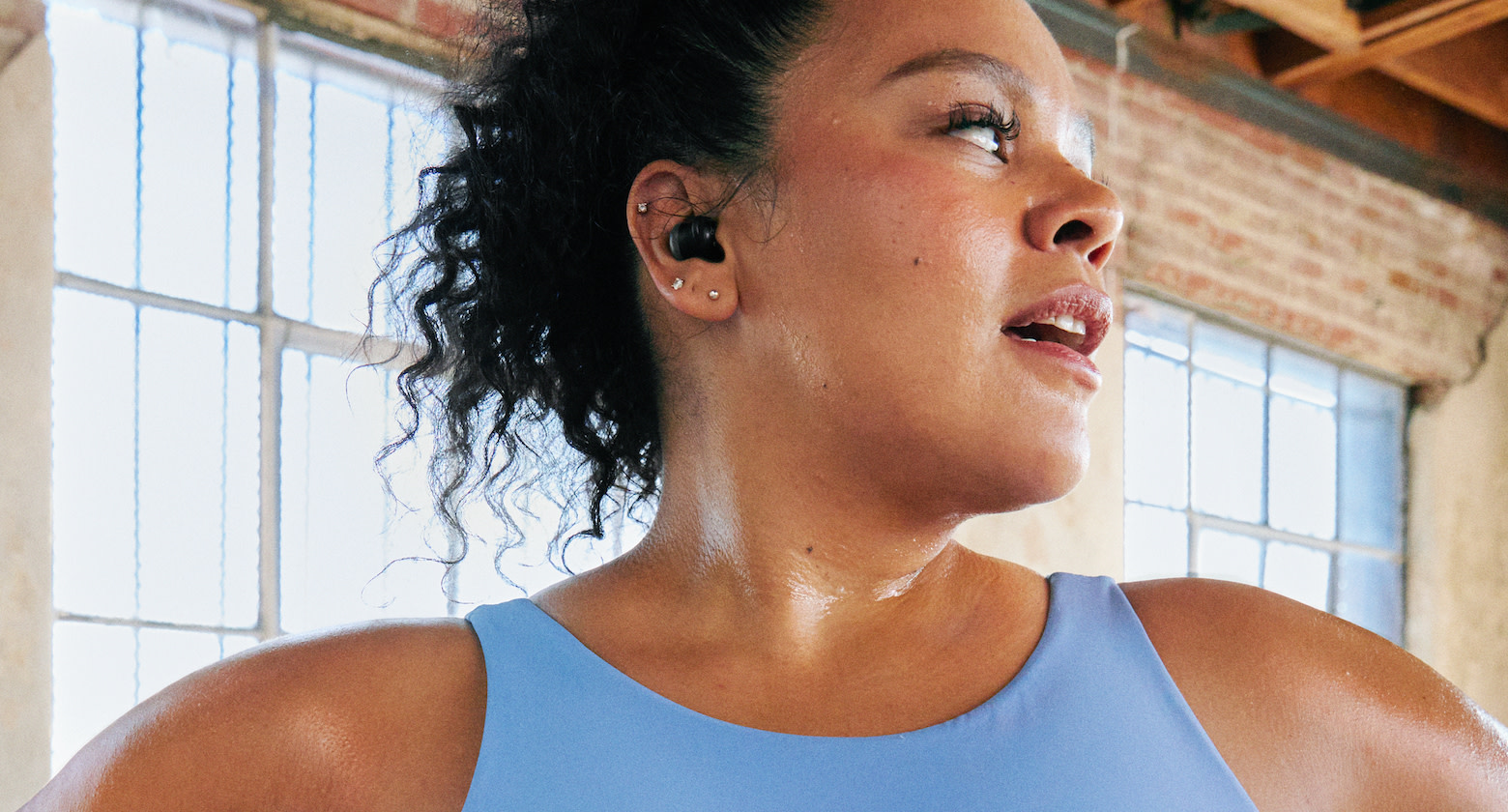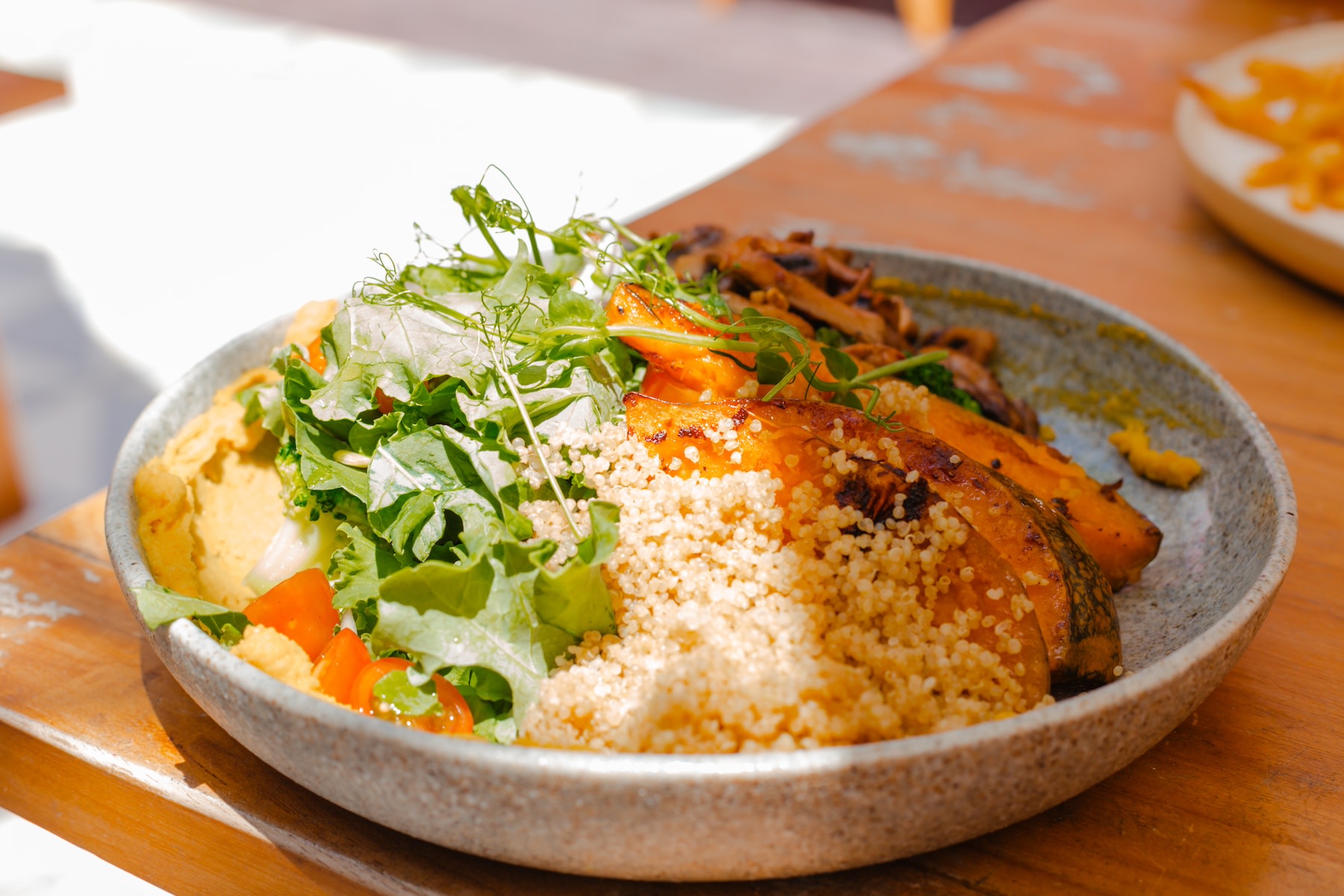
Anastasiya Mihailovna / Moment via Getty Images
These 9 Grains Have a Surprisingly High Amount of Protein—Here’s How to Add Them to Your Diet
Beef and beans shouldn’t get all the muscle-building glory. Many of these high-protein grains offer more protein than an egg.
By Karla Walsh•
What Are High-Protein Grains?
Benefits of Consuming High-Protein Grains
9 of the Best High-Protein Grains
Tips for Adding More High-Protein Grains to Your Diet
The Takeaway
It’s probably no surprise that whole grains are good for you. After all, they deliver a decent dose of fiber, offer a ton of vitamins and minerals, and support healthy cholesterol levels. But did you know they’re also under-the-radar sources of protein? That’s right: There are plenty of high-protein grains you can add to your plate to help you build muscle, bolster immune function, and support healthy blood sugar responses, experts say.
But what counts as a high-protein grain, exactly? And which whole grains are especially great vehicles for protein in your everyday diet? We talked to three registered dietitians to learn more.
What Are High-Protein Grains?
There isn’t a rigid universal standard for what qualifies as a high-protein grain, but the dietitians we spoke to agreed that a grain offering 5 grams of protein or more per serving is a good marker.
Backing up a bit, a “grain” refers to the seed or kernel of plants that belong to the cereal family, which are cultivated mainly for their starchy edible components, explains Danielle Crumble Smith, RD, a registered dietitian in Flintstone, Georgia, and a spokesperson for Top Nutrition Coaching. Grains are a fundamental part of diets worldwide, in forms ranging from rice to corn to wheat.
Whole grains include the entire kernel—the bran, germ, and endosperm—while refined grains have been processed to remove the bran and germ, leaving only the endosperm, Smith says. (Brown rice is a whole grain, while white rice is its refined grain version. Whole wheat flour is, as you might guess, a whole grain; all-purpose is the same crop, just refined.)
“While no foods are inherently ‘bad,’ some types of grains may be less nutrient-dense,” says Mackenzie Burgess, RDN, a Denver-based registered dietitian nutritionist and recipe developer at Cheerful Choices.
Unless you’re allergic or intolerant to them, no food needs to be off-limits. Deeming a food as “bad” can create disordered eating habits or feelings of guilt or shame when consuming it, Smith says. Instead of demonizing something like white pasta, Smith encourages clients to select foods based on how they feel after eating them. Most of the time, it feels really great to have an energetic pep-in-your-step, to feel satisfied for longer, or to notice increased endurance, for instance. “However, there are also times when the mental component and just wanting to enjoy something is more important in the moment, and that’s OK, too,” Smith says.
With that important note in mind, less nutrient-rich grain options include:
Refined grains: “Eating these regularly on their own can cause a spike in blood sugar levels followed by a crash, leaving you hungry and tired,” Burgess says. “Instead, reach for a complex carb like whole grains or be sure to pair a refined grain food with a protein and fiber source, like cheese and apple slices.”
Grains with added sugars and sodium: Some commercially processed grains, including breakfast cereals and pre-packaged rice side dish kits, may have high levels of added sugars and sodium. Depending on your personal health goals, these additions “can undermine the health benefits of grains by increasing calorie intake without providing additional nutrients and by raising the risk of health issues such as high blood pressure,” Smith says. “These options can certainly be convenient meal additions when life gets busy, so just check labels and choose grains that are low in added sugars and sodium when possible.”
Grains with lower amino acid variety: Our bodies require 20 amino acids to support growth, development, and overall health. We naturally make 11 of these, and the other nine amino acids are called “essential,” since we must consume them in our diet. While high-protein grains do exist, “most do not contain all nine essential amino acids needed to form a complete protein. This is particularly relevant for those who rely on plant-based sources for their protein needs,” Smith says. Still, many high-protein grains are what some health experts describe as “nearly complete,” meaning they contain all nine amino acids but some of them are low in quantity. But if you’re eating a varied diet overall, you should be able to cover your body’s protein needs, no sweat.
While it varies by food source, these less nutrient-rich grains typically offer less protein than their whole-grain counterparts.
Benefits of Consuming High-Protein Grains
Gram for gram, animal proteins like flank steak (24 grams of protein for 3 ounces), ground turkey (23 grams of protein for 3 ounces), and shrimp (20 grams of protein for 3 ounces), as well as classic plant-based protein sources like tofu, tempeh, and lentils, offer more protein than even the highest-protein grains. Still, “consuming high-protein grains offers several distinct benefits, particularly for those who are active or trying to build muscle,” Smith says.
High-protein grains are:
1. Nearly Free of Saturated Fats
A few plant foods, such as palm oil and coconut oil, include saturated fat. Excessive saturated fat intake has been linked to an increase in “bad” cholesterol that can put you at higher risk for heart disease, according to the American Heart Association. These high-protein grains contain very little, if any, saturated fat.
2. A Solid Source of Fiber
High-protein grains are a good source of fiber, says Kelly Jones, RD, a Newtown, Pennsylvania-based performance dietitian for athletes and active families. Fiber promotes gut health and slows down digestion to allow for more sustained energy levels and promote feelings of fullness. Plus, “by offering a protein that provides fiber rather than saturated fat, you may contribute to reduced cholesterol levels,” Jones adds.
Since the fiber factor can help make meals and snacks seem more filling, Burgess says that grains high in protein could also potentially aid in weight management, if that’s a goal for you. “Be sure to pair your grains with other foods like fruits, vegetables, dairy, fish, meat, nuts, and seeds for a well-rounded meal overall,” she suggests.
3. A Vehicle for Vitamins and Minerals
Active individuals and those building muscle need more than protein alone, Smith says. If you’re going for gains (and overall well-being), your best Rx is a well-rounded diet that supports increased metabolic demands and aids in recovery and muscle synthesis.
“High-protein grains provide more than just protein and fiber,” Smith says. “They are rich sources of vitamins (such as B vitamins), minerals (including magnesium, iron, and selenium), and other beneficial compounds like antioxidants. This makes them nutritionally dense, offering a broad spectrum of nutrients that support overall health, muscle recovery, and sustained energy levels.”
These additional nutrients found in high-protein grains aid energy production and oxygen transport and protect against oxidative stress, all of which are crucial for athletes and active individuals, Smith adds.
4. Energy-Boosting
Grains high in protein typically have a low to moderate glycemic index, meaning they help maintain more stable blood glucose levels. “This slow release of energy is ideal for endurance activities and can help prevent the energy spikes and dips associated with more refined carbohydrate sources,” Smith says. “Stable blood sugar levels ensure a continuous supply of energy during prolonged activities.”
A steady release of energy also aids in appetite control and weight management, which is beneficial for those looking to maintain or improve muscle-to-fat ratio, according to Smith.
5. A Versatile Plant-Based Option
If you’re aiming to reduce your meat consumption for environmental reasons, health reasons, or otherwise, high-protein grains make a savvy addition to your menu, Smith says. Sprinkle in several of them throughout the week to boost the diversity of your diet (a factor that’s been linked to better gut health) and to keep your taste buds engaged and excited. As you can see below, high-protein grains can play nicely in everything from bowls to baked goods to bedtime snacks.
Bonus: “Diets higher in plant-based foods and lower in meat consumption are linked to reduced risks of various chronic diseases, including heart disease and certain cancers,” Smith says.
9 of the Best High-Protein Grains
Now that you know what technically qualifies as a high-protein grain, let’s dig into some of the best sources to consider adding to your grocery list.
Note that ⅓ cup uncooked whole grains will usually yield about 1 cup cooked. About ½–1 cup is a typical serving for most of these high-protein grains, but to keep things uniform, we’re sharing protein content for 1 cup of each. We’ve listed them in order of most to least protein based on nutrition estimates from the US Department of Agriculture’s FoodData Central nutrition database. And finally, while a few of these choices aren’t officially cereal grains, they’re often grouped in the wider grain category and serve up notable nutrition benefits, which is why they made our list.
With all that in mind, here are some of the best high-protein grains to know:
1. Spelt
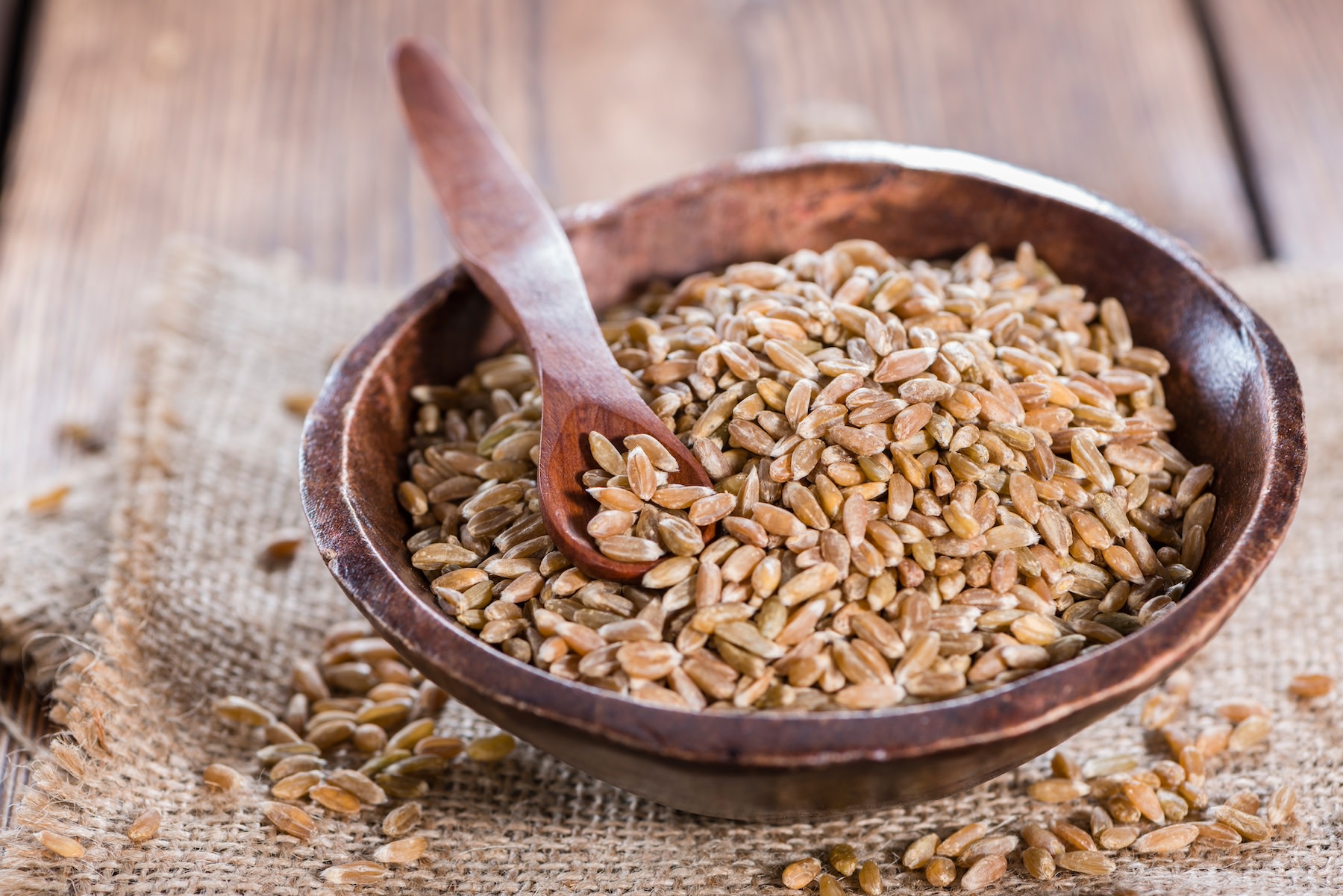
Erika Bunea / 500px via Getty Images
Protein per 1 cup cooked: 10.5 grams
This type of ancient grain is rich in dietary fiber (7.5 grams per cup) and provides a good source of oxygen-transporting iron, muscle- and nerve-supporting magnesium, and energy-boosting B vitamins, Smith says. It’s prized for its pleasant nutty flavor, and some folks with gluten intolerance report that they find spelt easier to digest than wheat—although the scientific jury is still out on that front.
Smith suggests using spelt flour when baking bread or muffins or trying whole spelt as a substitute for barley in soups and salads.
2. Kamut
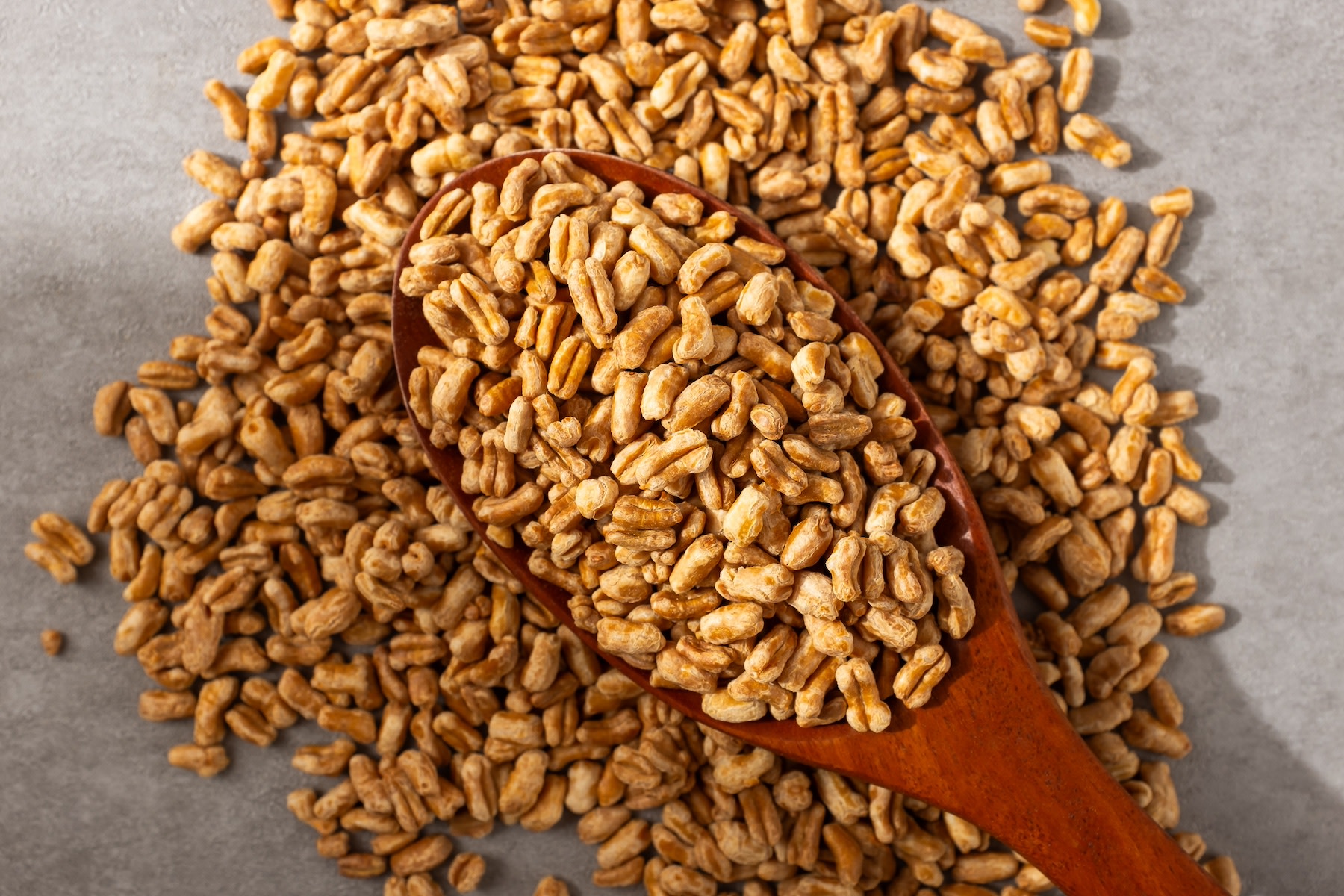
SUNGMIN / iStock / Getty Images Plus via Getty Images
Protein per 1 cup cooked: 10 grams
Another ancient grain, kamut (aka khorasan wheat) is a high-protein grain that’s prized for its fiber (7.5 grams per cup) and mineral content, Jones says. It’s available as a whole grain, a flour, or in kamut pasta, “which scores you an extra 2 grams of protein per cup versus a modern wheat option,” Jones adds.
Include kamut as part of your weekly meal prep to feature in salads, grain bowls, soups, stews, and side dishes throughout the week.
3. Teff
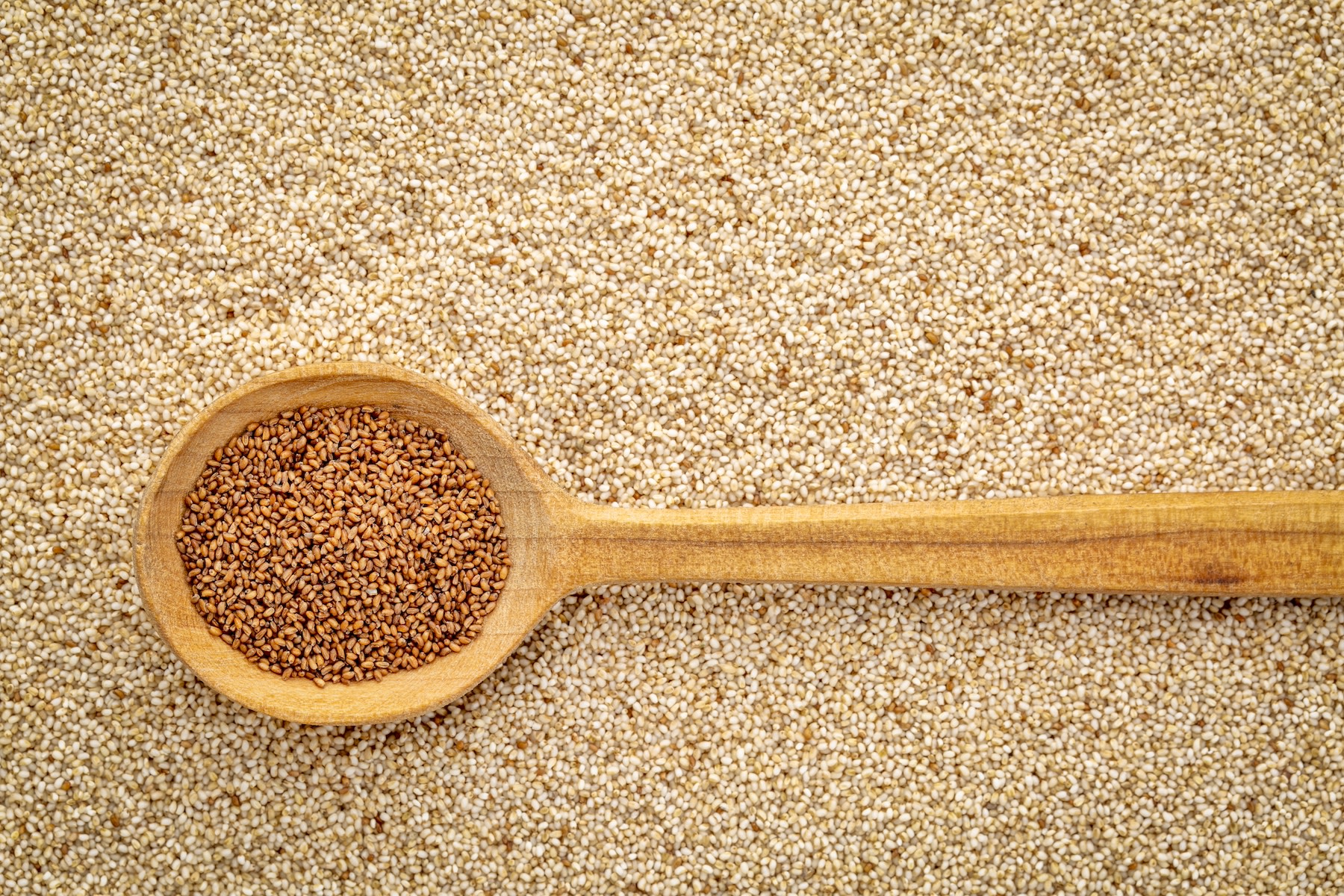
marekuliasz / iStock / Getty Images Plus via Getty Images
Protein per 1 cup cooked: 10 grams
In addition to being a high-protein grain, teff is a solid source of iron and calcium, two minerals that are “nutrients of concern” for vegetarians in particular. This means that these minerals are important to prioritize so the body’s bases are covered since they’re harder to find in plant-based ingredients.
“Teff is also high in resistant starch, which acts like fiber, fuels healthy gut bacteria, and can benefit blood sugar management,” Smith says.
Teff flour is traditionally used to make Ethiopian injera, a spongy, fermented flatbread. You can also try it in whole-grain form in baked goods, such as gluten-free pancakes, breads, or muffins, or as a thickener in soups.
4. Amaranth
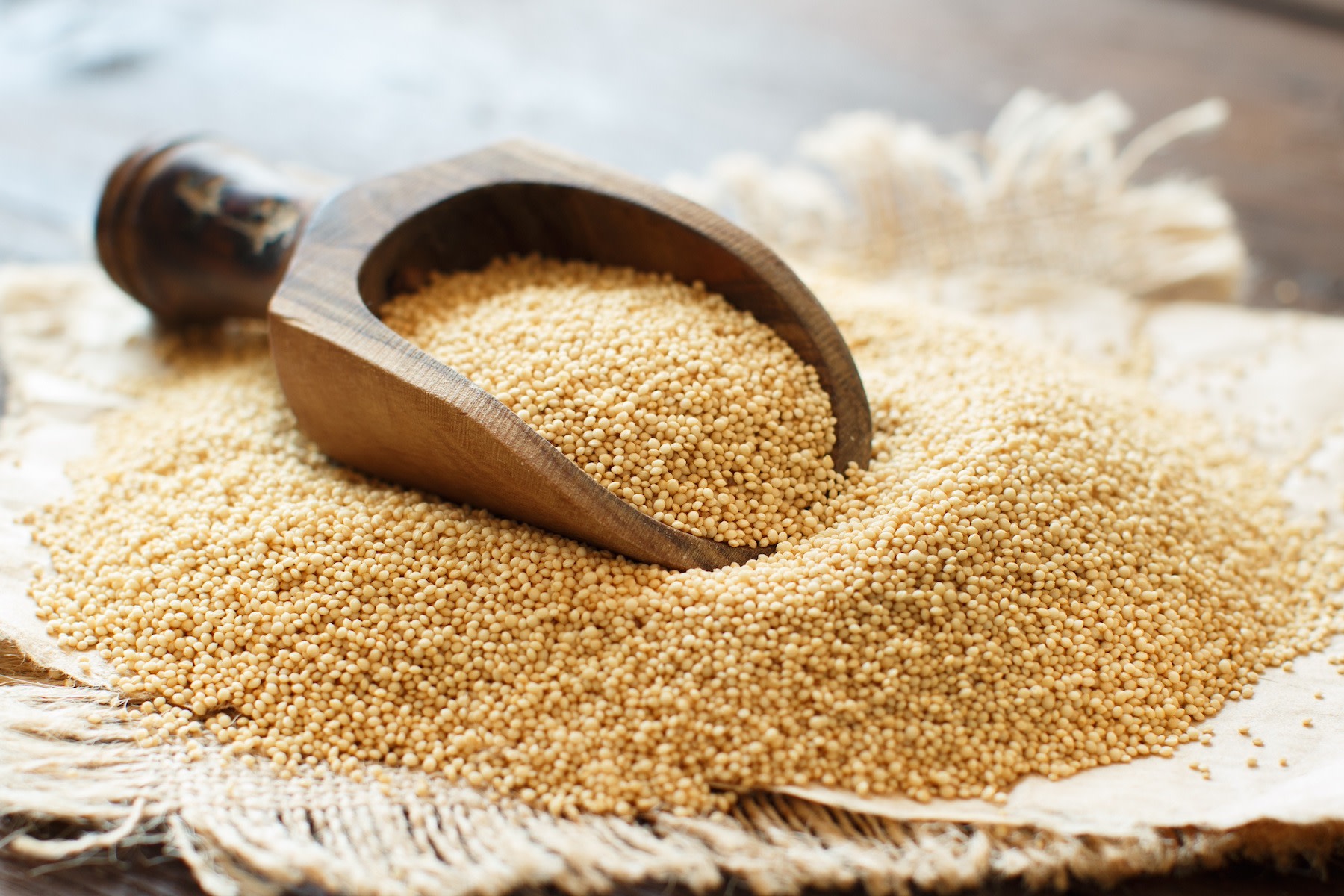
Karisssa / iStock / Getty Images Plus via Getty Images
Protein per 1 cup cooked: 9.5 grams
Remember that talk about complete proteins? Amaranth is one high-protein grain (technically a seed) that checks nearly all the essential-amino-acid boxes. That means its protein is better digested, absorbed and utilized by the body, Jones says. Amaranth is also packed with antioxidants, has a good dose of fiber (5 grams per cup), and is naturally gluten-free, Smith says.
The grainy seeds look similar to quinoa; they’re just slightly smaller. Smith recommends using the earthy, nutty grains to thicken soups or stews, or use it instead of oats for a warm breakfast porridge. You can also pop amaranth like popcorn. Seek it out at the store in whole grain form, as a puffed cereal, or as a flour for baking.
5. Quinoa
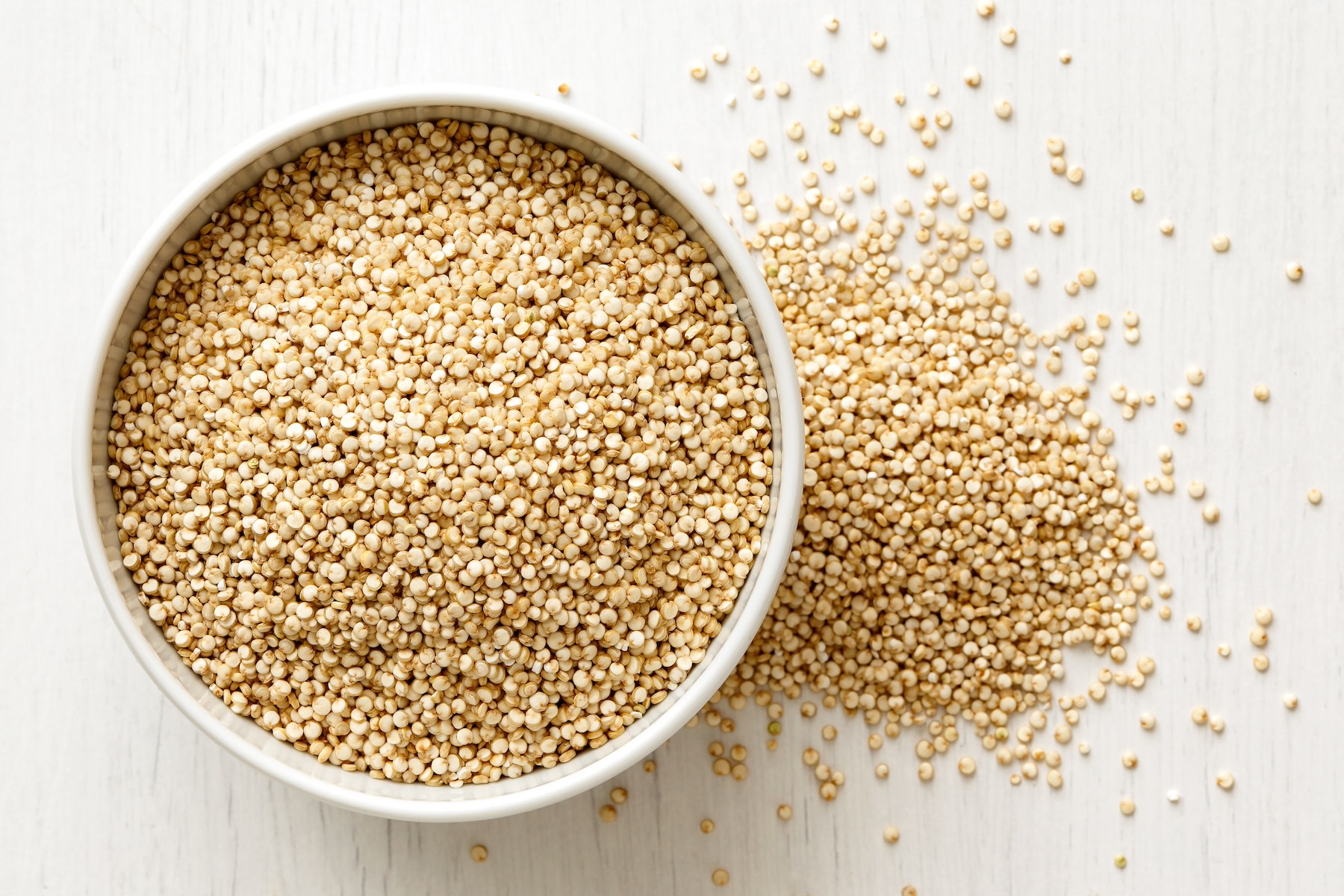
etienne voss / iStock / Getty Images Plus via Getty Images
Protein per 1 cup cooked: 8 grams
Often mistaken as a grain but technically a seed, quinoa is a “nutritional powerhouse,” Burgess says. “Quinoa is also rich in fiber and vitamins and minerals such as folate, magnesium, and zinc,” she says.
Bake with quinoa flour for gluten-free goodies with a bit of bonus protein, or try cooked quinoa in salads, grain bowls, or soups. When you’re ready for a break from oats, treat quinoa like your usual bowl and dress it up; it can go sweet (maple syrup, berries, nuts) or savory (eggs, sriracha, fresh herbs). Burgess also likes to toss some quinoa into her granola before baking it for extra crunch and nutritional benefits, and Jones digs it as a rice swap in sushi.
6. Sorghum
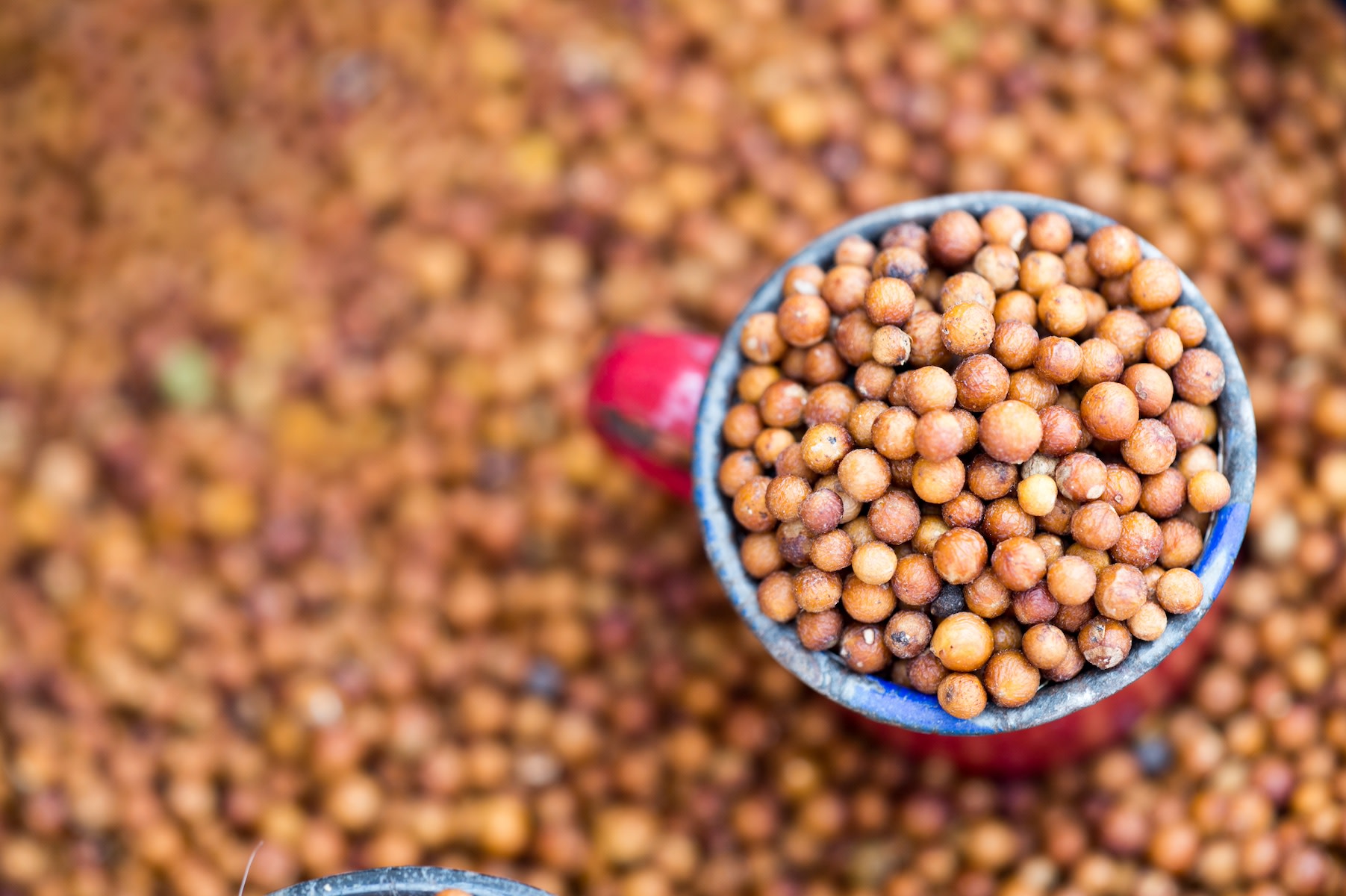
Edwin Remsberg / The Image Bank via Getty Images
Protein per 1 cup cooked: 8 grams
Burgess says that people are sleeping on one seriously nutrient-packed grain: sorghum. Although it might not get as much time in the whole-grain spotlight as its popular peers like quinoa or oats, sorghum contains 12 essential nutrients including zinc, selenium, and copper, which can support a healthy immune system, Burgess says.
Popped sorghum is a stellar movie snack, or serve cooked sorghum anywhere you would feature rice or quinoa.
7. Wild Rice
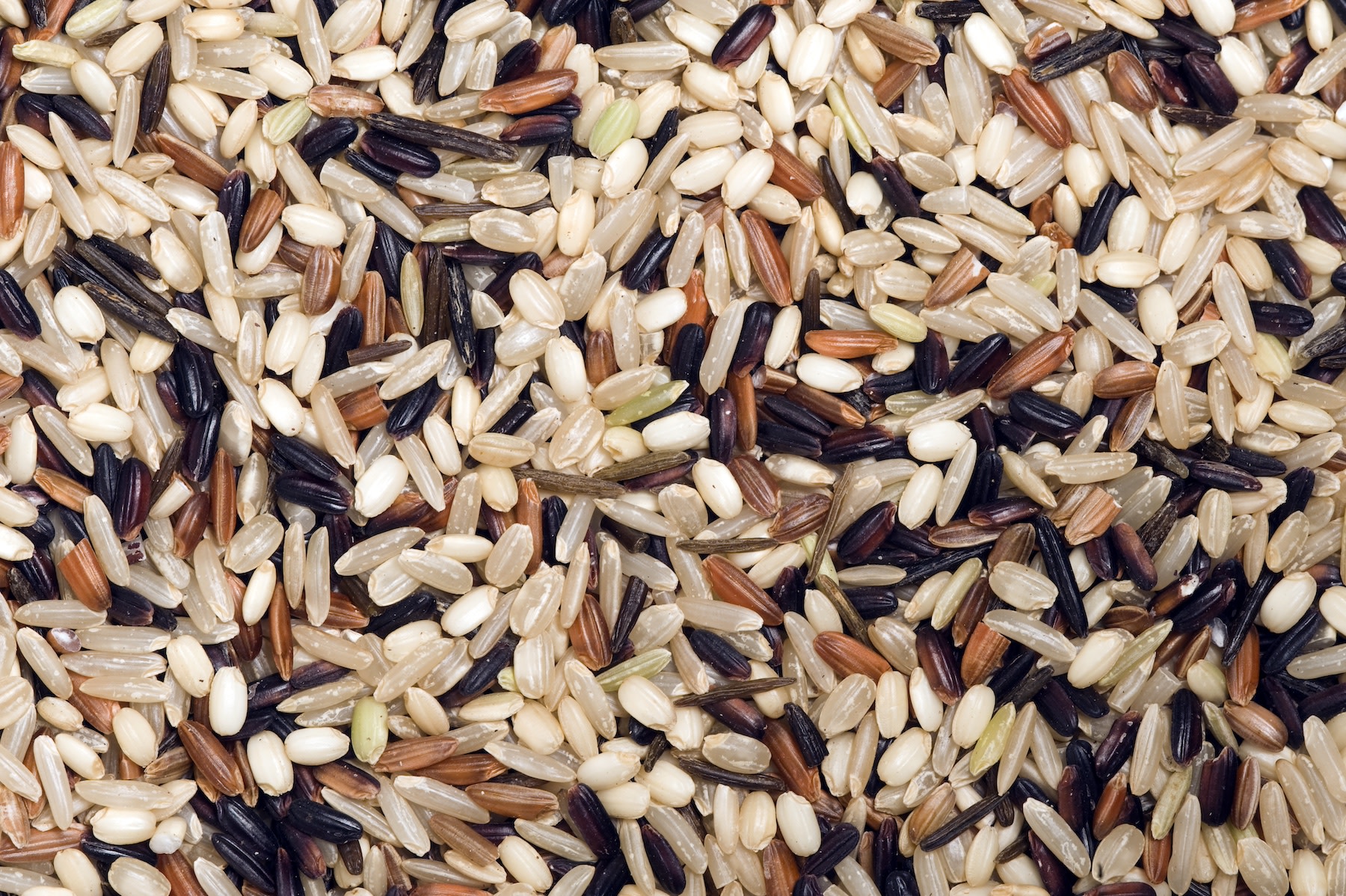
jskiba / E+ via Getty Images
Protein per 1 cup cooked: 6.5 grams
Technically a seed of an aquatic grass rather than a grain, wild rice packs protein, a bit of fiber (3 grams per cup), and is one of the lowest-fat grains on this list, if that’s a priority for you. Wild rice has slightly more protein than brown rice (5.5 grams per cup), making it the highest-protein grain in the rice department.
“Wild rice adds a wonderful texture to stuffing, pilafs, or cold salads with dried fruits and nuts,” Smith says. Or make a classic: wild rice soup.
8. Oats
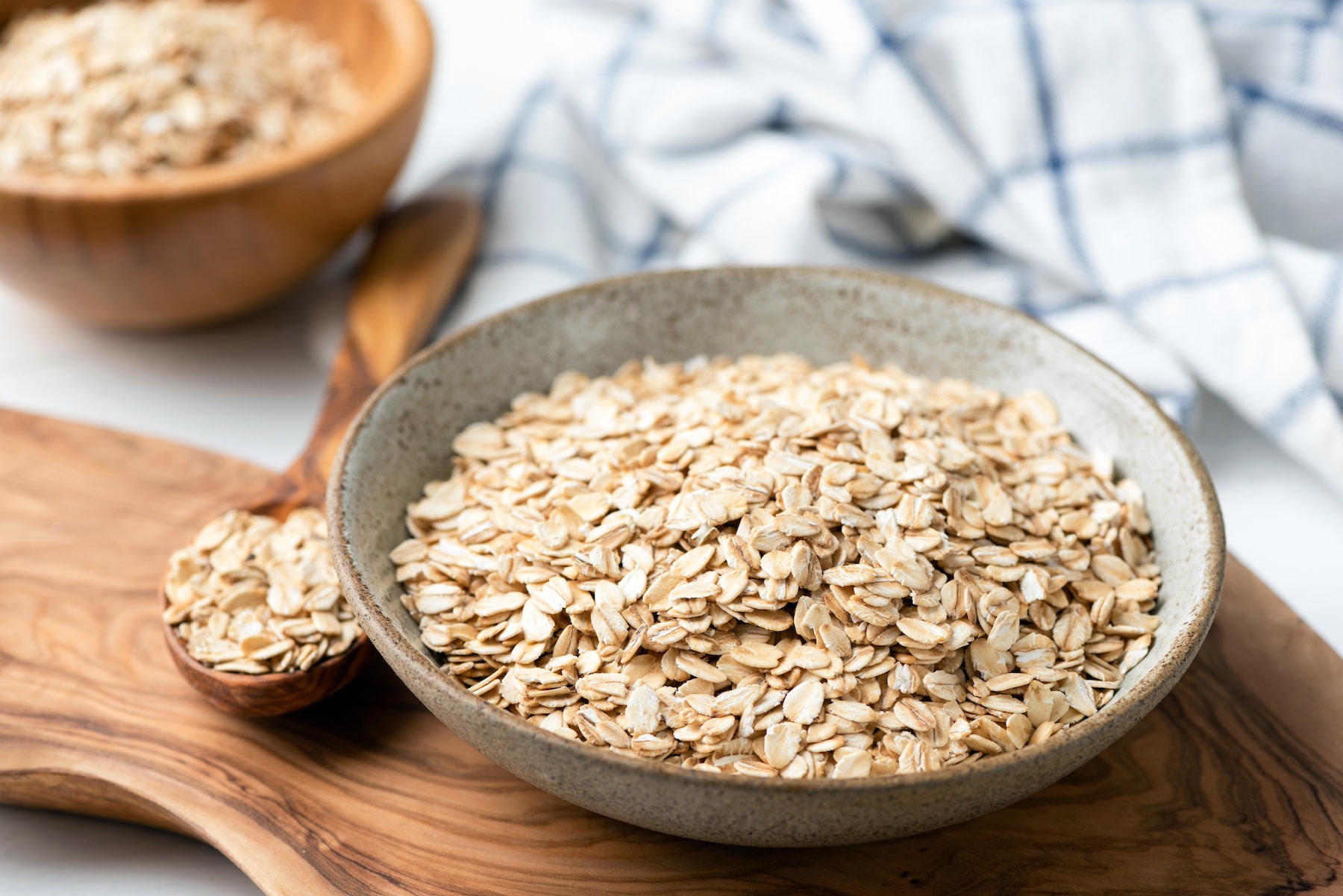
Arx0nt / Moment via Getty Images
Protein per 1 cup cooked: 6 grams
You may have groaned about having to eat them before school as a kid, but oats are a nutrition powerhouse—including in the protein department. They’re also rich in soluble fiber, which may help stabilize blood sugar levels and can potentially aid in reducing the risk of type 2 diabetes, Burgess says.
“Oats also contain a type of fiber called beta-glucan, which some studies have demonstrated may have heart-protective effects by lowering LDL cholesterol levels,” she adds.
Prepare oats with soy or cow’s milk for even more protein, swirl in a spoonful of nut butter or two, then top with fresh fruit for an ultra-filling bowl. Alternatively, blend oats into smoothies or batter for muffins, pancakes, or quick bread, or use oat flour for baking.
9. Buckwheat
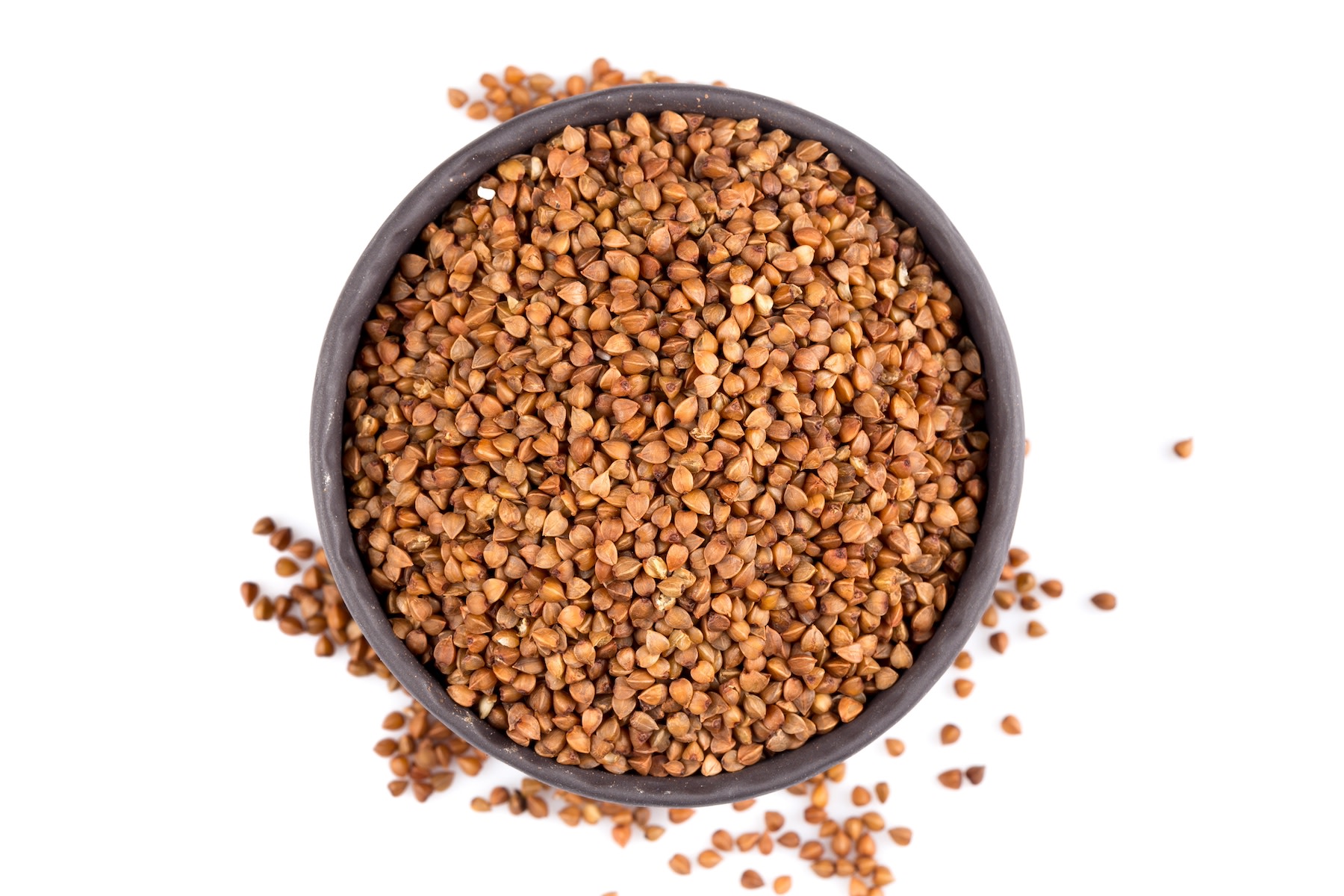
R.Tsubin / Moment via Getty Images
Protein per 1 cup cooked: 5.5 grams
Although not a true cereal grain but rather a seed related to rhubarb, Smith says, buckwheat is often placed under the grain umbrella (and once you taste it and learn about its notable health benefits, you’ll probably be glad it’s invited to the party). Even though “wheat” is part of its name, buckwheat is actually gluten-free.
“It’s high in antioxidants, particularly rutin, which can improve circulation and prevent cholesterol from blocking blood vessels,” Smith says.
Buckwheat flour is excellent in pancakes or noodles (Japanese soba is often buckwheat flour-based). Whole buckwheat groats can be cooked like oatmeal and savored for breakfast or a snack.
Tips for Adding More High-Protein Grains to Your Diet
Want even more dietitian-loved ways to cook and enjoy these high-protein grains? Here are a few more favorites from Burgess, Jones, and Smith:
Soak oats with your choice of milk, chia seeds, and mix-ins, then refrigerate overnight for an easy make-ahead breakfast. Or start your day with a high-protein grain like quinoa, buckwheat, or amaranth instead of traditional oatmeal.
Customize no-bake energy bites with oats or quinoa, nut butter, and dried fruit or chocolate chips.
Add cooked high-protein grains like farro, wild rice, or barley to salads for a hearty boost.
Build grain bowls with high-protein grains like teff, buckwheat, amaranth, or spelt, then dress them up with raw or roasted vegetables, another protein source, and fresh herbs and/or a dressing or sauce.
Replace pasta in soups or stews with a high-protein grain like buckwheat or quinoa. These not only add protein but also thicken broths, providing a richer texture while increasing the nutritional content.
Lean on popped grains, like sorghum or amaranth, for a satisfying snack; season them with salt and nutritional yeast for additional flavor.
Meal prep two different high-protein grains at the start of the week, then rotate through them (for side dishes, soups, salads, bowls, and beyond) to diversify your routine.
Fuel up before or after a workout with whole-grain carbs. Pre-workout, consider a whole-grain pita with hummus or a whole-wheat bagel with nut butter. After, refuel with a couple slices of sprouted grain bread topped with tomato slices, cottage cheese, and everything bagel seasoning.
The Takeaway
High-protein grains often get overlooked in the muscle-building department, but there are several complex carbs that are fantastic options for active individuals. Beyond being a surprising source of protein, these grains come packaged with vitamins, minerals, and fiber that support overall health and longevity. And since they’re low on the glycemic index, high-protein grains offer a steady source of energy to help you power through your workout without bonking.
While there’s no official definition of what a high-protein grain is, dietitians agree that grains with at least 5 grams of protein per serving make the list. Some of the best grains high in protein include spelt, kamut, amaranth, quinoa, and oats.
Even the best high-protein grains won’t cover all of your protein needs, though, so consider them as a supplement to other animal-based or plant-based protein sources that offer a different mix of amino acids and higher amounts of protein.

Peloton App
Access thousands of classes with no equipment needed.
This content is for informational and educational purposes only and does not constitute individualized advice. It is not intended to replace professional medical evaluation, diagnosis, or treatment. Seek the advice of your physician for questions you may have regarding your health or a medical condition. If you are having a medical emergency, call your physician or 911 immediately.
This content is for informational and educational purposes only and does not constitute individualized advice. It is not intended to replace professional medical evaluation, diagnosis, or treatment. Seek the advice of your physician for questions you may have regarding your health or a medical condition. If you are having a medical emergency, call your physician or 911 immediately.
Get our latest health stories straight to your inbox
Enter your email to get articles, expert-backed tips, and updates from Peloton sent to your inbox.
By providing your email address, you agree to receive marketing communications from Peloton.
For more about how we use your information, see our Privacy Policy.







